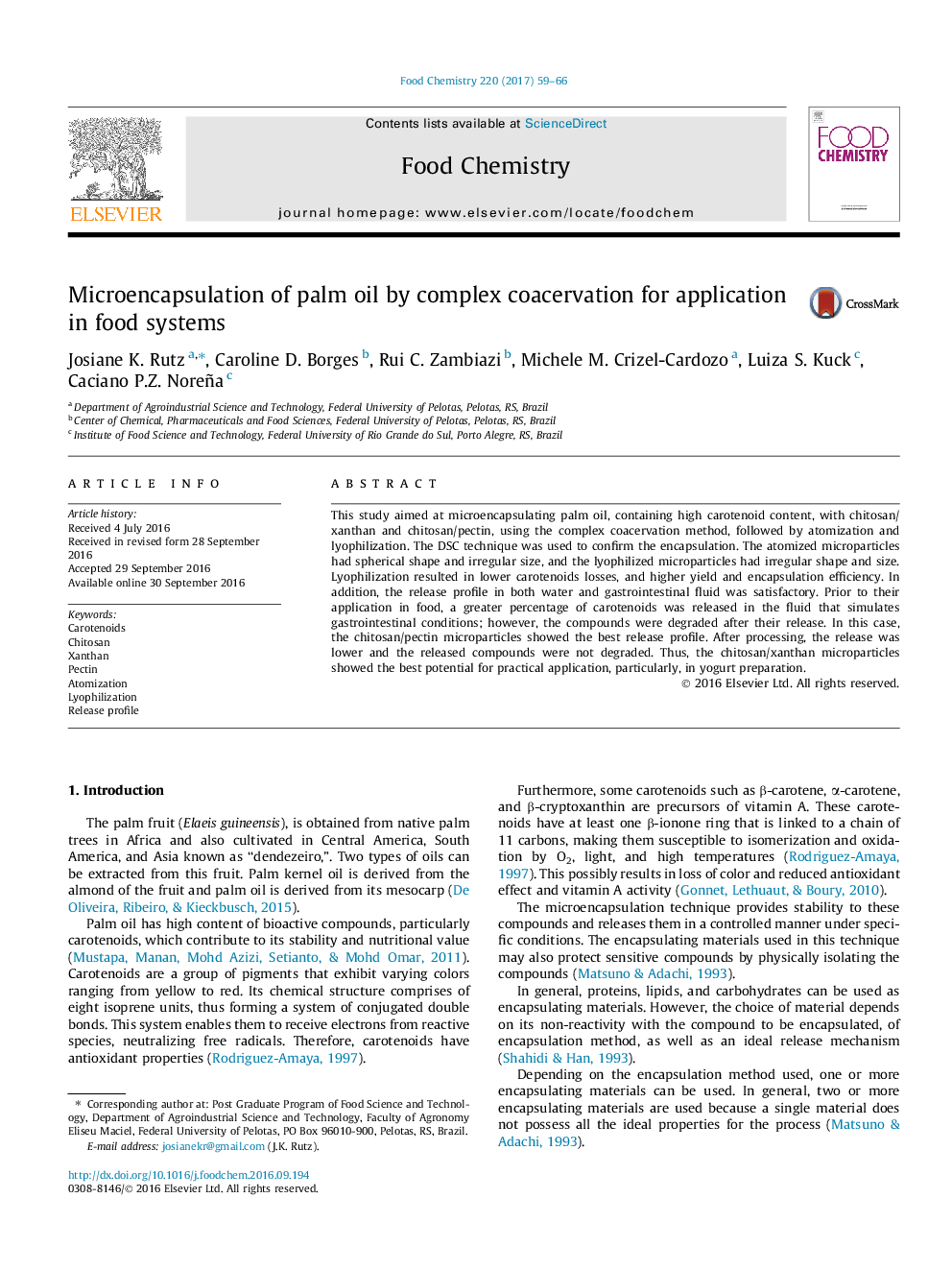| Article ID | Journal | Published Year | Pages | File Type |
|---|---|---|---|---|
| 5133949 | Food Chemistry | 2017 | 8 Pages |
â¢Palm oil was encapsulated in chitosan/xanthan and chitosan/pectin by complex coacervation.â¢Lyophilization provided higher yield and lower carotenoid losses during encapsulation.â¢Lyophilization provided higher encapsulation efficiency and the best release profile.â¢Chitosan/pectin microparticles showed the best release of carotenoids in GFS.â¢Chitosan/xanthan microparticles showed the best release profile of carotenoids in the yoghurt.
This study aimed at microencapsulating palm oil, containing high carotenoid content, with chitosan/xanthan and chitosan/pectin, using the complex coacervation method, followed by atomization and lyophilization. The DSC technique was used to confirm the encapsulation. The atomized microparticles had spherical shape and irregular size, and the lyophilized microparticles had irregular shape and size. Lyophilization resulted in lower carotenoids losses, and higher yield and encapsulation efficiency. In addition, the release profile in both water and gastrointestinal fluid was satisfactory. Prior to their application in food, a greater percentage of carotenoids was released in the fluid that simulates gastrointestinal conditions; however, the compounds were degraded after their release. In this case, the chitosan/pectin microparticles showed the best release profile. After processing, the release was lower and the released compounds were not degraded. Thus, the chitosan/xanthan microparticles showed the best potential for practical application, particularly, in yogurt preparation.
